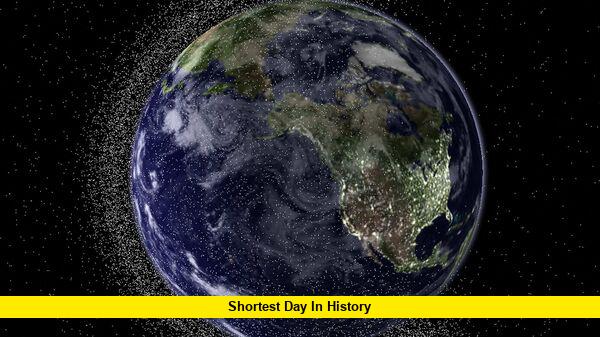On July 9, 2025, Earth will experience the shortest day in history, with the planet completing a full rotation slightly faster than usual. This rare phenomenon is caused by the Moon’s unique position relative to Earth’s equator, accelerating our planet’s spin and shortening the day by approximately 1.3 to 1.6 milliseconds. This event marks a significant moment in our understanding of Earth’s rotation dynamics and has implications for global timekeeping systems.
Why Is Earth’s Rotation Speeding Up?
Earth’s rotation is not perfectly constant; it fluctuates due to various natural factors. The primary cause of the July 9 speed-up is the Moon’s current orbital position. During this period, the Moon is farthest from Earth’s equator, which alters gravitational forces acting on Earth’s axis. This shift causes Earth to spin slightly faster than usual, resulting in shorter days.
This acceleration is subtle and imperceptible to humans but critical for precision technologies such as atomic clocks, GPS, and satellite communications. Scientists have observed that this is not an isolated incident—similar shortened days are expected on July 22 and August 5, 2025, with day lengths reduced by up to 1.5 milliseconds on these dates as well.
Historical Context and Scientific Significance
Earth’s rotation has been gradually slowing down over millions of years, primarily due to tidal friction caused by the Moon. However, since 2020, scientists have noted a surprising reversal of this trend, with Earth spinning faster on several occasions. July 9, 2025, is the most extreme example so far, making it the shortest day ever recorded.
This phenomenon is so unusual that it has prompted the International Earth Rotation and Reference Systems Service (IERS) to consider implementing a negative leap second—a time adjustment that subtracts a second from the global clock to compensate for the faster rotation. This would be the first time such a correction is introduced, currently projected for 2029.
Duncan Agnew, a geophysicist at the University of California, San Diego, emphasizes the importance of this event: “It’s not a huge change that will cause catastrophe, but it is something notable and unprecedented in modern timekeeping.”
What Does This Mean for Our Clocks and Daily Life?
While a 1.3 to 1.6 millisecond reduction in day length is too small to affect daily human activities, it is crucial for scientific and technological precision. Atomic clocks, which govern Coordinated Universal Time (UTC), rely on Earth’s rotation to keep time accurate. When Earth spins faster, the clocks run slightly ahead, necessitating adjustments to prevent time drift.
The upcoming negative leap second will be a historic first, reflecting how Earth’s natural rhythms impact our measurement of time. Without such adjustments, GPS systems, telecommunications, and financial markets could experience synchronization errors.
Key Points Summary
- July 9, 2025 will be the shortest day in history, shortened by about 1.3 to 1.6 milliseconds.
- The Moon’s position farthest from Earth’s equator is causing Earth’s rotation to speed up.
- Similar short days are expected on July 22 and August 5, 2025.
- The International Earth Rotation and Reference Systems Service (IERS) may introduce a negative leap second by 2029 to adjust timekeeping.
- This acceleration is unprecedented but not dangerous, with no impact on daily life.
- Earth’s rotation fluctuations affect precision systems like atomic clocks and GPS.
What Causes Earth’s Rotation Changes Beyond the Moon?
Earth’s rotation speed is influenced by multiple factors:
- Gravitational forces from the Moon and Sun
- Tectonic activity such as earthquakes and volcanic eruptions
- Mass redistribution from melting ice caps and ocean currents
- Changes in Earth’s internal structure and core dynamics
These factors combine to create tiny variations in day length, which scientists monitor closely with atomic clocks.
Looking Ahead: The Future of Earth’s Day Length
Over millions of years, Earth’s day length has changed dramatically. During the Jurassic Period, days were about 23 hours long. Currently, Earth’s rotation is slowing by roughly 1.7 milliseconds per century due to tidal friction, but recent speed-ups show that short-term fluctuations are possible.
In the distant future, the length of a day could extend to 25 hours. However, in the near term, we will continue to see small fluctuations, requiring careful monitoring and occasional adjustments to global timekeeping.
As Earth spins faster this July, marking the shortest day in history, it reminds us how dynamic and interconnected our planet is with celestial forces. Stay informed about these fascinating changes and how they might affect the precision of timekeeping technologies we rely on every day.
Explore more about Earth’s rotation and its impact on time by following updates from scientific organizations and timekeeping authorities.
